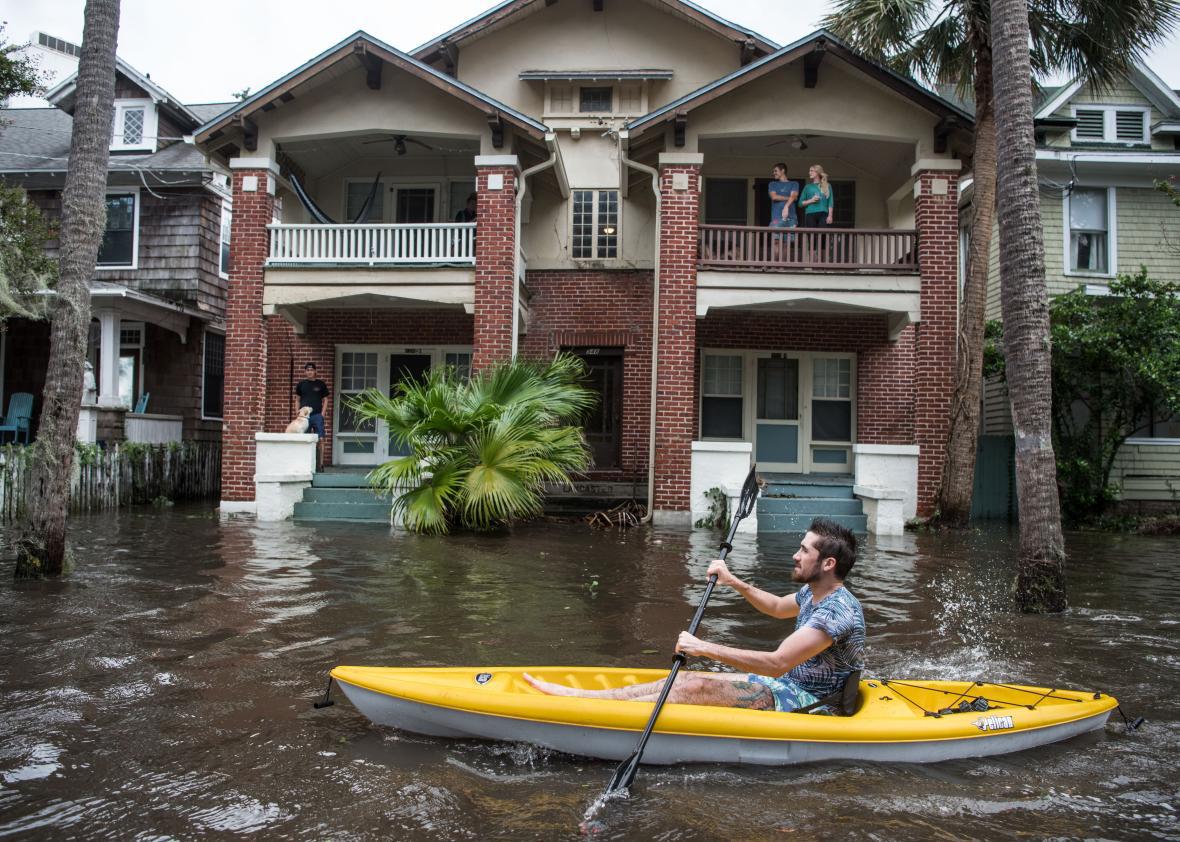As people emerge from their shelters and return to their homes in the wake of Hurricane Irma, we are now getting a better sense for the specific damage that the storm wrought in the U.S. Whereas Harvey’s most severe destruction was concentrated in one contiguous area around Houston, Irma seems to have left pockets of ruin scattered in a totally unpredictable pattern throughout Florida and other southeastern states. The hurricane is predicted to cost around $100 billion in damages. In Florida alone, 12 deaths have been reported so far. Here is a rundown of some of the worst-hit areas.
Florida Keys
FEMA administrator Brock Long told reporters that an estimated 25 percent of homes were demolished and an additional 65 percent were extensively damaged in the Florida Keys. Fires, 130 mph winds, and 15-foot storm surges were the primary culprits. Officials have not been able to reach most of the islands, though, so the full extent of the destruction is not yet clear. At least two people have died, but it is unknown whether the storm was responsible.
Miami
Miami was home to two of the three infamous crane collapses in Florida, videos of which were widely shared on social media when Irma made landfall. Although local officials claimed that the cranes were built to withstand winds of up to 145 mph, they were surprisingly felled by the 100 mph winds that battered the city. Five-foot storm surges also sank and beached dozens of boats, and flooded the roads and buildings in some of the city’s most expensive districts like Brickell.
St. Augustine
St. John’s County, incorporating coastal St. Augustine city, was in shambles on Tuesday. Sheriff David Shoar told News4JAX that the county, which saw 80 mph winds, was experiencing the “worst case scenario” and that “No one was spared.” Many roads are still blocked by debris and flooding—stalling emergency vehicles—and homes have collapsed and had their foundations eroded. In the city, docked boats were hurled around. A 36-foot motor yacht sank, and a sailboat crashed into the Santa Maria restaurant. At least one person died from a heart attack.
Marco Island
Marco Island, a 24-square-mile area where Irma made landfall, saw 130 mph winds and four-foot storm surges. In the highly vulnerable community, cell towers toppled over, and at least 15 homes lost their roofs or suffered other serious damage. One of the main priorities now is clearing roads of debris.
Jacksonville
Jacksonville had the most severe flood since 1864, as 20-inch rains made the St. Johns River overflow, which rendered the downtown district a swamp. The 5-foot storm surges submerged park monuments, and the roads resembled rivers. Fires and trees falling on homes caused numerous injuries, though no deaths have been reported thus far. The sheriff’s office announced that 356 people had to be rescued from the flooding. The situation in Jacksonville could become even more disastrous, as the water levels are expected to rise and fall in the coming days.
Naples
Naples saw 6-foot storm surges and almost 12 inches of rain. Neighborhoods are now under waist-deep water, some of which first responders have not yet reached. Homes collapsed and had their roofs ripped off due to the over 140 mph winds.
Charleston, South Carolina
Although Irma stayed 200 miles away from Charleston, the city still suffered massive tidal surges—the worst since Hurricane Hugo in 1989. The 10-foot tide flooded low-lying neighborhoods, including areas that had trouble recovering after Hurricane Matthew last October, and unmoored local landmarks. Ambulances were unable to operate for a period of time due to 72 mph winds and possible tornados.
